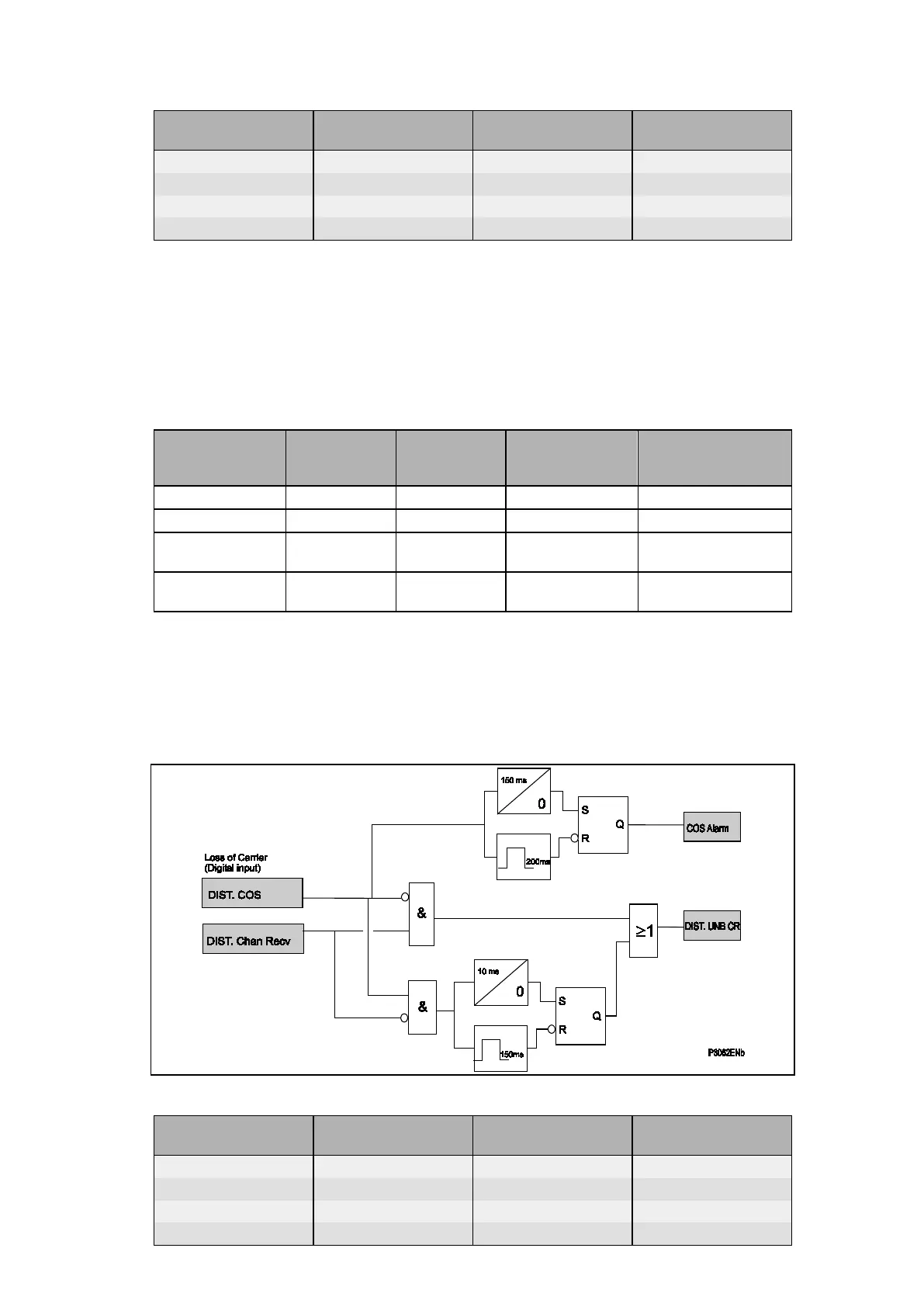44x/EN AP/Hb6
-60 MiCOM P40 Agile
‘DIST. Chan Recv’
‘DEF. Chan Recv’
‘DIST. COS’
‘DEF. COS’
‘DIST. UNB CR’
‘DEF. UNB CR’
‘COS alarm’
0 0 0 0
1 1 1 0
0 1 1 (Window) 1 (delayed)
1 0 0 1 (delayed)
3.2.6.3 Loss of Carrier
In this mode the signalling equipment used is such that a carrier/data messages are
continuously transmitted across the channel, when in service. For a permissive trip signal to
be sent, additional information is contained in the carrier (eg. a trip bit is set), such that both
the carrier and permissive trip are normally received together. Should the carrier be lost at
any time, the relay must open the unblocking window, in case a line fault has also affected
the signalling channel. Two opto inputs to the relay need to be assigned, one is the Channel
Receive opto input, the second is designated Loss of Carrier (the inverse function to carrier
received). The function logic is summarised in Table 6: .
System
Condition
Permissive
Channel
Received
Loss of
Guard
Permissive Trip
Allowed
Alarm
Generated
Healthy Line No No No No
Internal Line Fault Yes No Yes No
Unblock No Yes
Yes, during a
150ms window
by 150ms
Signalling Anomaly No Yes No
by 150ms
Table 6: Logic for the loss of carrier function
The window of time during which the unblocking logic is enabled starts 10ms after the guard
signal is lost, and continues for 150ms.
For the duration of any alarm condition (DDB: ‘COS Alarm’), the “zone 1 extension” trip logic
will be invoked if the option ‘Distance schemes / Z1 Ext on Chan. Fail’ has been enabled.
Figure 38: Loss of carrier
‘DIST. Chan Recv’
‘DEF. Chan Recv’
‘DIST. COS’
‘DEF. COS’
‘DIST. UNB CR’
‘DEF. UNB CR’
‘COS alarm’
0 0 0 0
0 1 1 (Window) 1 (delayed)
1 0 1 0
1 1 0 1 (delayed)

